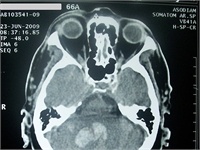
Stroke: Signs, Prevention, and Reaction
Important Notice: Our web hosting provider recently started charging us for additional visits, which was unexpected. In response, we're seeking donations. Depending on the situation, we may explore different monetization options for our Community and Expert Contributors. It's crucial to provide more returns for their expertise and offer more Expert Validated Answers or AI Validated Answers. Learn more about our hosting issue here.

Stroke: Signs, Prevention, and Reaction
You must be logged in to post a comment.
A recent study conducted by a national health group gauging public health awareness, discovered that while most people knew that a lump in the breast could be a sign of breast cancer, and frequent chest pains could indicate heart disease, few could identify even one of the warning signs related to stroke. And since an average of 158,000 people die of stroke each year, this finding is quite alarming.
Medical experts now believe that more than 700,000 people suffer strokes each year–nearly twice that of past year estimates. By 2050, that number is expected to approach more than one million–two-thirds of which will be women. Even today, more than two million women are living with the obvious aftereffects of stroke; slurred speech and the inability to walk unaided. But as health experts point out, not only can your own risk of stroke be greatly reduced by lifestyle changes — preventing a stroke from even occurring in some cases — by knowing the tall-tale signs of a stroke and then reacting quickly, you can stop a developing stroke from unleashing its full damage.
Here are the five signs not to ignore:
> Sudden weakness or numbness in your face, arm, or leg, especially on one side of your body.
> Sudden dimness or loss of vision in one or both eyes.
> Sudden confusion, difficulty speaking or understanding speech.
> Sudden severe headache for no apparent reason.
> Sudden trouble walking, dizziness, loss of balance or coordination.
By definition:
A stroke (or “brain attack,” as it is sometimes referred to), occurs when blood vessels in your brain become clogged or burst–cutting off blood supply and oxygen to nearby brain cells. Deprived of blood, brain cells begin to die, a process that leads to the obvious signs: impaired speech and vision, difficulty walking, as well as paralysis, and sometimes, even coma or death.
About 80% of all strokes are what are termed ischemic, meaning they occur when a blood clot or buildup of plaque in the arteries of the neck or brain prevents normal blood flow to the brain. The other 20% are hemorrhagic strokes, occurring when a defective artery in the brain bursts and floods the surrounding cells with blood, or when a blood vessel ruptures and bleeds between the brain and skull.
Prevention:
While some contributing factors such as age and family predisposition cannot be controlled, others can have significant effects on stroke prevention–as well as go far to improving general health in a number of other critical areas.
Quitting smoking, taking dietary and/or medicinal steps to lower high blood pressure, controlling weight, eating a low-fat/high-fiber diet, exercising regularly, and limiting alcohol can have remarkable positive effects.
Additionally, for those facing a family history of stroke, it may also be smart to take blood thinners if you suffer atrial fibrillation (a condition in which the blood won’t pump properly), or pay special attention to diet and medication should you have diabetes. And if your doctor has determined that you are particularly at risk for ischemic stroke, a daily aspirin may be called for.
(Other doctor-related options include: estrogen hormone replacement, blood pressure-lowering medications, and cholesterol-lowering medications. In more extreme cases, a procedure called carotid endarterectomy (CEA) in which the doctor removes the plaque from inside your carotid arteries is an option your doctor may suggest.)
When stroke strikes:
When action is taken quickly at the first sign of a stroke, recovery and long-term aftereffects can be greatly reduced–and in some cases, eliminated altogether. While recent studies advocate the taking of an aspirin at the first sign, doctors emphasize that calling 911 should be your first reaction. Only in the emergency room can the severity of your condition be assessed, with options at the ready.
A great many stroke victims benefit from a clot-dissolving medication, the most common termed an “intravenous tissue plasminogen activator” (TPA). TPA effectively dissolves blood clots that shut down blood flow to the brain. However, this medication can only be administered after a brain scan has been performed to clarify diagnosis.
Another common solution, used specifically for hemorrhagic stroke, is surgery to draw out the accumulated blood. If the bleeding (and subsequent stroke) was caused by an aneurism (a weakening of the artery), surgery can repair the damage and control re-bleeding into the brain–but only if caught soon enough.
On the horizon:
While still only in the experimental stages, a number of new treatments are on the horizon for stroke victims.
Among these are “neuroprotective agents” (that will be designed to save the nerve cells in the brain tissue that are being starved of oxygen), “clot-dissolving agents” (newer, more effective clot-dissolvers that target dangerous artery clogs only), “catheter-based procedures” (clot busters that can be delivered directly into the clot through a tiny delivery tube threaded into the clogged brain artery), and "artery angioplasty” (a variation of this now commonly-used procedure that will allow surgeons to open narrow arteries that supply blood to the brain).